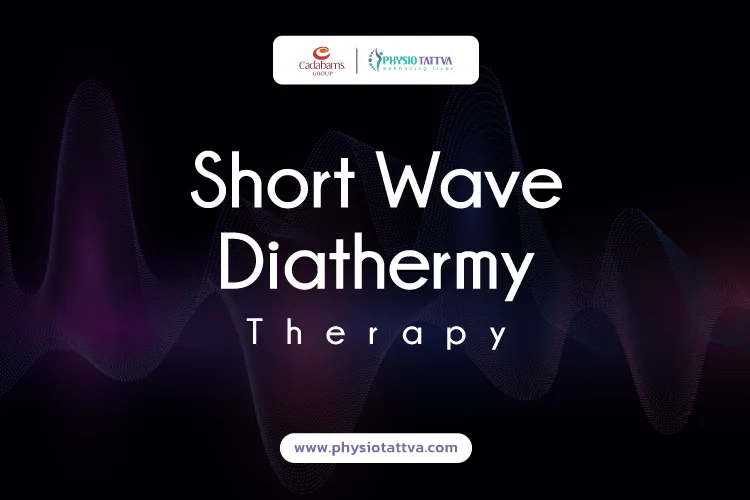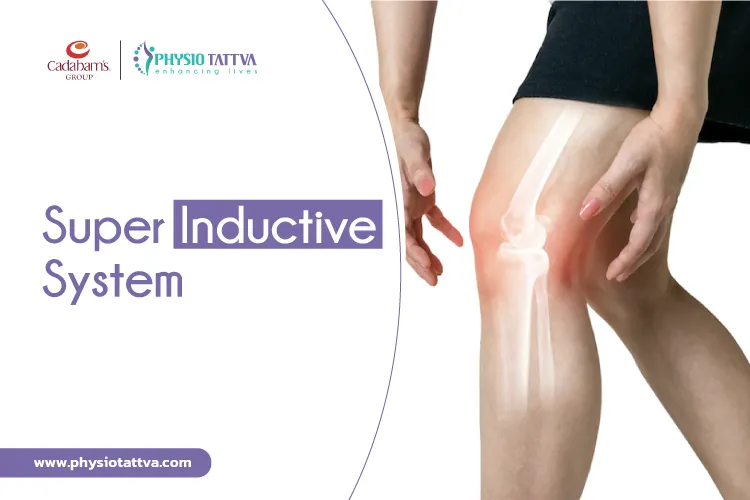Ultrasound Therapy for Sciatica: Everything You Need to Know
Ultrasound therapy offers a non-invasive solution for managing sciatica by reducing pain, inflammation, and promoting healing. This article explores how ultrasound therapy works to alleviate sciatica symptoms and the benefits it provides.
Discover how this effective treatment can enhance recovery and improve quality of life. Physiotattva physiotherapy clinics in Bangalore and Hyderabad can help you experience these benefits with personalised ultrasound therapy plans. Their expert practitioners tailor treatments to your specific needs, ensuring optimal results and comprehensive care for sciatica relief.
Understanding Sciatica and Ultrasound Therapy
Sciatica refers to pain that radiates along the sciatic nerve, which extends from the lower back down through the legs. It typically results from nerve compression due to herniated discs, spinal stenosis, or muscle tension.
Ultrasound therapy provides a non-invasive treatment option by using sound waves to target affected tissues. This approach helps reduce pain, inflammation, and promotes healing, offering significant relief from sciatica symptoms and improving overall function and quality of life.
How Does Ultrasound Therapy Work for Sciatica?
Ultrasound therapy works for sciatica by delivering sound waves through a transducer to penetrate deep into tissues. These sound waves create vibrations that help reduce pain and inflammation. The therapy targets the sciatic nerve and surrounding tissues to alleviate pressure and enhance healing.
Sound Wave Generation
In ultrasound therapy, sound waves are generated by a transducer that emits high-frequency vibrations. These vibrations travel through the skin and underlying tissues, reaching the affected areas.
The sound waves create mechanical effects that help reduce pain and inflammation. This process stimulates cellular activity and promotes tissue repair, targeting the sciatic nerve and surrounding muscles to relieve discomfort.
Thermal Effects
Ultrasound therapy generates thermal effects by converting sound wave energy into heat within the targeted tissues. This localized heating helps relax muscles, reduce stiffness, and alleviate pain.
The increased temperature also improves tissue elasticity and reduces inflammation. By applying controlled heat, ultrasound therapy supports muscle relaxation and reduces the pressure on the sciatic nerve.
Increased Blood Circulation
Ultrasound therapy uses sound waves to stimulate blood vessels, promoting vasodilation and increasing overall circulation. This increased blood flow helps deliver essential nutrients and remove waste products from the affected areas, facilitating faster tissue repair and reducing inflammation.
Stimulation of Tissue Repair
Ultrasound therapy stimulates tissue repair by sending sound waves deep into affected areas. These sound waves create mechanical vibrations that promote cellular activity and accelerate the healing process. The therapy enhances the repair of damaged tissues around the sciatic nerve and muscles, aiding in faster recovery.
Reduction of Swelling and Inflammation
Ultrasound therapy helps reduce swelling and inflammation by applying sound waves that target inflamed tissues. The vibrations from the ultrasound waves enhance lymphatic drainage and blood flow, which helps to remove excess fluid and reduce swelling.
This process also decreases inflammation by promoting a quicker resolution of inflammatory responses. As a result, patients experience less discomfort and improved function in the affected areas, contributing to effective sciatica management.
Pain Relief
Ultrasound therapy provides pain relief by delivering sound waves that penetrate deep into tissues, reducing muscle tension and nerve irritation. The therapy helps to disrupt pain signals and promote endorphin release, which naturally alleviates pain.
By targeting the sciatic nerve and surrounding muscles, ultrasound therapy helps address several issues that cause the pain.
Non-Thermal Effects
Non-thermal ultrasound effects occur without significant heat generation, focusing on mechanical impacts rather than heating tissues. The sound waves stimulate cellular activity and promote healing by enhancing tissue permeability and fluid movement.
This approach is beneficial for reducing pain and inflammation without the risks associated with thermal effects.
Benefits of Ultrasound Therapy for Sciatica
Ultrasound therapy offers several benefits for managing sciatica, including targeted pain relief, reduced inflammation, and enhanced tissue healing. It improves blood circulation, which helps deliver essential nutrients and speeds up recovery.
The therapy also increases flexibility and mobility by addressing muscle stiffness and nerve irritation.
Targeted Pain Relief and Reduced Inflammation
Ultrasound therapy provides targeted pain relief and reduces inflammation by focusing sound waves on specific areas affected by sciatica. The therapy directly addresses the sciatic nerve and surrounding tissues, reducing pain and discomfort.
It improves the blood flow and facilitates the removal of inflammatory substances, ultrasound therapy helps decrease swelling and promotes a faster resolution of inflammation.
Promotes Tissue Healing and Recovery
Ultrasound therapy promotes tissue healing and recovery by stimulating cellular activity and enhancing tissue repair processes. The sound waves encourage the regeneration of damaged tissues and improve overall recovery by increasing blood circulation and nutrient delivery.
This therapy helps speed up the healing of inflamed or injured areas, supporting the body’s natural repair mechanisms.
Enhanced Blood Circulation
Ultrasound therapy enhances blood circulation by increasing the flow of oxygen-rich blood to the affected areas. The sound waves stimulate blood vessels, promoting vasodilation and improving overall circulation.
This increased blood flow helps deliver essential nutrients to damaged tissues and facilitates the removal of waste products.
Increased Flexibility and Mobility
Ultrasound therapy increases flexibility and mobility by addressing muscle stiffness and promoting relaxation. The sound waves help reduce muscle tension and improve joint function, leading to a greater range of motion.
By alleviating pain and enhancing tissue repair, ultrasound therapy supports overall movement and flexibility. Patients often experience improved mobility and less discomfort during daily activities, contributing to better management of sciatica and enhanced quality of life.
Non-Invasive Treatment Option
Ultrasound therapy is a non-invasive treatment option for managing sciatica. It uses sound waves to penetrate deep into tissues without the need for surgery or injections. This approach reduces pain, inflammation, and promotes healing without disrupting the skin or underlying structures.
Patients can benefit from effective relief while avoiding the risks and recovery time associated with more invasive procedures. Ultrasound therapy offers a safe, gentle alternative for sciatica management.
Minimal Side Effects
Ultrasound therapy for sciatica has minimal side effects. Patients may experience slight discomfort or a mild warming sensation during the session. These effects are usually temporary and subside quickly.
Unlike medications or invasive procedures, ultrasound therapy does not carry significant risks or adverse reactions. This makes it a well-tolerated treatment option for many individuals seeking relief from sciatica pain and inflammation, contributing to a safe and comfortable therapeutic experience.
Can Be Combined with Other Therapies
Ultrasound therapy can be effectively combined with other therapies for comprehensive sciatica management. It complements physical therapy, medication, and lifestyle changes by addressing pain and inflammation directly.
Integrating ultrasound therapy with exercises, stretching, and ergonomic adjustments enhances overall treatment outcomes. This multi-modal approach helps to maximize relief and support the healing process, providing a holistic strategy to manage sciatica and improve functional recovery.
The Ultrasound Therapy Procedure for Sciatica
The ultrasound therapy procedure for sciatica begins with a consultation to assess your condition. A technician applies a conductive gel to the treatment area to facilitate sound wave transmission.
Using a transducer, sound waves are emitted and directed at the affected tissues. The procedure typically lasts 15 to 30 minutes, during which you may feel mild sensations. The physiotherapist monitors your response and adjusts settings as needed to ensure effective treatment and comfort.
What to Expect During Your Session
During your ultrasound therapy session, you will lie comfortably while a technician applies a gel to your skin. The transducer will move over the treatment area, emitting sound waves that penetrate deep tissues.
You may feel a mild sensation or warmth but should not experience significant discomfort. The session generally lasts 15 to 30 minutes. Afterward, you may resume normal activities, and any temporary effects like mild soreness should resolve quickly.
Duration and Frequency of Therapy
Ultrasound therapy sessions typically last between 15 to 30 minutes. The frequency of therapy depends on the severity of your condition and your treatment plan. Generally, sessions occur 1 to 3 times per week.
Your physiotherapist will adjust the duration and frequency based on your progress and response to treatment. Consistent therapy is crucial for achieving optimal results, improving pain relief, and supporting effective management of sciatica.
Sensations During Treatment
During ultrasound therapy, you may feel a mild, soothing sensation or slight warmth as sound waves penetrate the tissues. The treatment should not cause significant discomfort.
Some patients experience a gentle pulsing or tingling sensation, which indicates the sound waves are effectively reaching the targeted area. The sensations are typically well-tolerated and temporary, with most patients finding the treatment comfortable and beneficial for managing sciatica symptoms.
Post-Treatment
After an ultrasound therapy session, you may notice some mild soreness or a temporary increase in sensitivity in the treated area. These effects are usually short-lived and should subside quickly. You can resume normal activities immediately following the session.
The physiotherapist may provide specific post-treatment instructions, such as recommendations for stretching or avoiding strenuous activities. Monitoring your response and adhering to any guidelines will help optimize the benefits of the therapy.
Follow-Up
Follow-up appointments are essential to assess your progress and adjust the treatment plan as needed. Your therapist will review how you responded to previous sessions, discuss any changes in symptoms, and make recommendations for continued therapy.
Regular follow-ups ensure that the treatment remains effective and that any necessary modifications are made to address your evolving needs. Effective communication during these appointments supports the overall success of managing sciatica through ultrasound therapy.
Finding a Qualified Healthcare Provider
To find a qualified healthcare provider for ultrasound therapy, look for professionals with experience in treating sciatica and using ultrasound technology. Verify their credentials, check reviews or recommendations, and ensure they are licensed. A qualified provider will assess your condition accurately, tailor the treatment plan to your needs, and monitor your progress.
How Long Does It Take to See Results?
The time to see results from ultrasound therapy varies depending on the severity of your sciatica and individual response to treatment. Some patients experience relief after the first few sessions, while others may take longer.
Typically, noticeable improvements in pain reduction and mobility can occur within 2 to 4 weeks of consistent therapy. Regular follow-up with your provider helps track progress and make necessary adjustments to ensure optimal results and effective management of sciatica.
Why to Choose Physiotattva?
Choose Physiotattva physiotherapy clinic for ultrasound therapy, a proven solution for sciatica relief. Our team of experienced professionals is dedicated to your well-being, prioritizing safety and adhering to the highest treatment standards. We utilize innovative ultrasound techniques to target the root cause of your discomfort, promoting faster healing and pain relief.
At Physiotattva physiotherapy clinics in Bangalore and Hyderabad, we provide personalized care tailored to your specific needs, ensuring effective results and comfort throughout your treatment journey. Whether you're seeking relief from sciatica pain or aiming to improve your mobility, our commitment to excellence and holistic health practices makes us the trusted choice for achieving your health goals.
Don’t wait to start your recovery! Book your ultrasound therapy session today and let our experts guide you toward sciatica relief. Contact us at +91 89510 47001.




-Physiotherapy.webp)
-for-Shoulder-Pain-Relief.webp)
-for-Knee-Pain-Relief.webp)


-for-Back-Pain-Relief%20(1).webp)





.webp)










.webp)


.webp)





.webp)
.webp)


.webp)
.webp)

.webp)

.webp)

.webp)
.webp)

.webp)






.webp)



.jpeg)



.webp)
.webp)




.webp)
.webp)







.png)









%20(1)-p-3200.jpeg)


.jpg)
.webp)
.webp)
.webp)




